Updated October 30, 2024
In a bustling world filled with noise pollution, finding solace in the quiet comfort of your home has never been more important. This blog aims to shed light on how professional insulation installation can contribute to creating quiet living spaces. It will explore the various types of insulation that help reduce noise, their benefits, and practical tips for homeowners seeking a tranquil home environment.
Understanding Noise Pollution and Its Impact
Understanding noise pollution is crucial. It stems from various sources like traffic, industrial activity, and gadgets, often affecting mental and physical well-being. Chronic exposure to noise can lead to stress, sleep disturbances, and even cardiovascular issues. Creating a tranquil home environment by blocking sounds is vital for relaxation, peace and quiet, and enhanced focus.
The Role of Insulation in Noise Reduction
Insulation plays an important role in noise reduction by acting as a sound barrier. Even though there is no such thing as actual soundproof insulation, materials like fiberglass insulation and foam absorb and dampen sound waves, preventing their transmission through walls, floors, and ceilings. This science of acoustic insulation ensures sound control for a quieter, more peaceful environment indoors from all types of sounds.
Types of Insulation for Noise Reduction
Various insulation materials are effective insulation types for noise reduction and noise pollution mitigation. Cellulose insulation is made from recycled paper and offers excellent soundproofing qualities. Spray foam insulation seals gaps as it reduces sound infiltration. Acoustic batt insulation features sound-absorbing fibers and is designed to provide higher levels of soundproofing. Mineral wool insulation provides excellent sound insulation due to its density. Each type offers distinct sound deadening qualities for tailored solutions.
Choosing the Right Insulation for Your Home
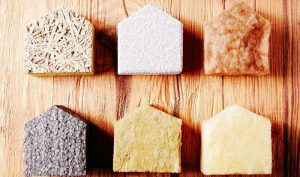
Installation Techniques for Maximum Noise Reduction
Unwanted sounds can come from anywhere and anything, both inside your home and out. This noise bleed often results from hollow interior wall cavities filled with air, which amplifies sound. One way to block this amplification, creating ideal noise pollution mitigation, is to fill these cavities with cellulose insulation or loose-fill fiberglass insulation. The process involves creating small penetration points in the wall, inserting a hose, and gently packing the cavity with the loose-fill insulation. Once the cavity is filled, the penetration point is replaced. After installing insulation, you can paint these areas, so the penetration points match the original wall.
It’s also important to seal any gaps or cracks, especially around doors and windows that could compromise soundproofing with foam or weatherstripping. Be sure to double-check for proper coverage to create an effective sound barrier, ensuring a quieter and more peaceful indoor atmosphere.
Benefits Beyond Silence: Energy Efficiency and Comfort

Maintaining and Upgrading Your Soundproofing
To maintain soundproofing, regularly inspect your home’s insulation for wear, replace damaged sections, and reseal gaps. During home renovations is the perfect time to upgrade your noise-reducing insulation by installing thicker insulation or adding extra layers to adapt to changing noise concerns. For complex upgrades, always consult a contractor, as their professional expertise will ensure optimal results and peace of mind.
We’re Here to Help You Create a More Peaceful Home
Creating a tranquil, noise-free home environment is paramount for your well-being, property value, and a higher quality of life. Investing in specialized noise-reducing insulation yields lasting benefits. For expert guidance, contact B&M Insulation today, a leading insulation contractor serving Nashville and its surrounding areas. We’re here to meet all your insulation needs and help create a peaceful oasis for you and your family to enjoy for many years to come.
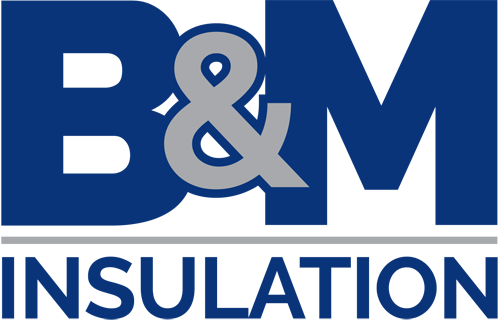



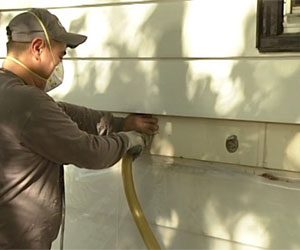 Attic insulation is important for home energy efficiency. But proper home insulation goes beyond your attic. Wall insulation helps your living space stay comfortable and also helps prevent drafts. Exterior wall insulation adds a thermal blanket around your home, increasing comfort and keeping energy bills in line.
Attic insulation is important for home energy efficiency. But proper home insulation goes beyond your attic. Wall insulation helps your living space stay comfortable and also helps prevent drafts. Exterior wall insulation adds a thermal blanket around your home, increasing comfort and keeping energy bills in line.
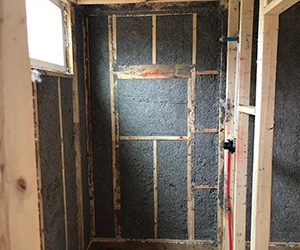 When insulating a new or remodeled home, most people think of fiberglass insulation. Cellulose insulation is a great option for insulating open walls in new homes or remodeling projects. In a 2×4 wall cellulose provides a 13.3 R-value and in a 2×6 wall it provides a 20.9 R-value.
When insulating a new or remodeled home, most people think of fiberglass insulation. Cellulose insulation is a great option for insulating open walls in new homes or remodeling projects. In a 2×4 wall cellulose provides a 13.3 R-value and in a 2×6 wall it provides a 20.9 R-value.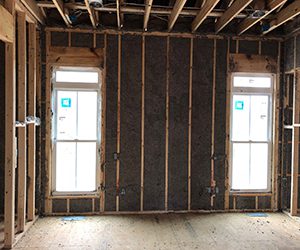 Fiberglass isn’t the only option for insulating a new home or remodeling project. Consider insulating open cavity walls with stabilized cellulose insulation.
Fiberglass isn’t the only option for insulating a new home or remodeling project. Consider insulating open cavity walls with stabilized cellulose insulation.